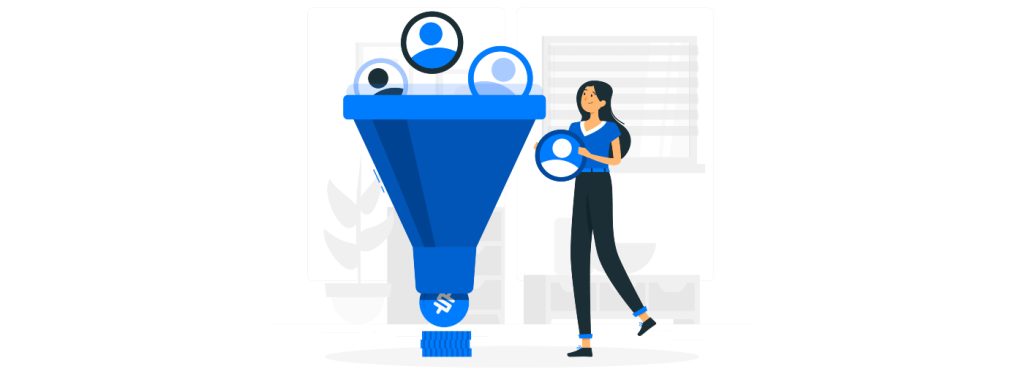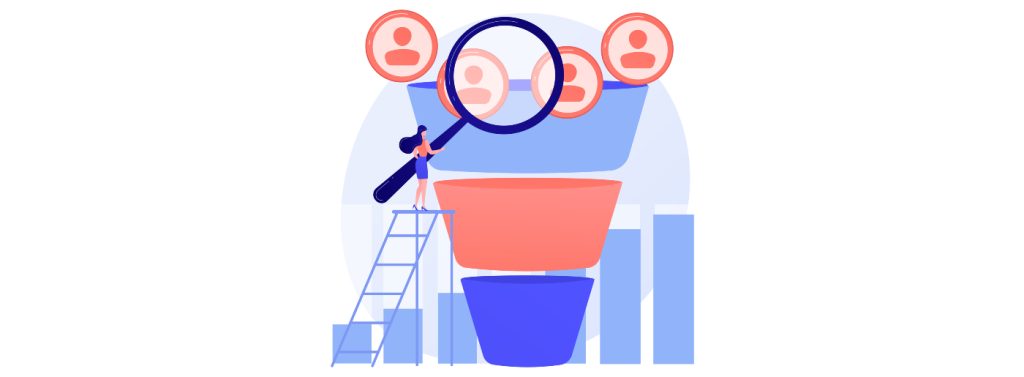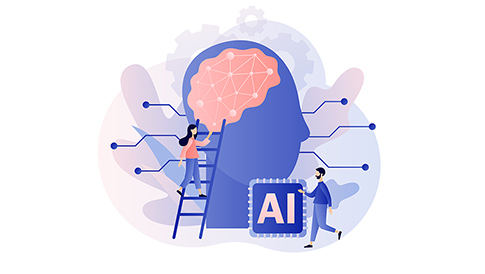SEO Funnel: A New Way of Looking at Your Website’s Structure
New e-commerce website owners aren’t always great when it comes to looking at their sites from a “big picture” point of view. A good website builder can help you understand your site’s hierarchical structure, but that’s only part of the battle. You need to think about where people are in their relationship with your brand when they view certain types of content. That way, you can plan your site so that each step guides the user to the next logical step and ultimately toward buying a product. This type of design is called a sales funnel or SEO funnel.
Having a well-optimized SEO funnel can be transformative for your online business because it means that you’re making the most out of every type of content that your site has.
When a user lands on a product page, the next logical step is adding the product to their cart. That’s just one step away from spending money, which is why product page SEO is so important.
If you really want to turbocharge your website’s revenue, though, you need to start thinking of your entire site as a funnel. Some people may enter the funnel through the top and will be further away from converting, but every user represents a potential opportunity to earn a sale eventually.
Optimizing your SEO funnel isn’t just good for maximizing your conversion rate. It can also improve your site’s overall search rankings because Google can see that you’re doing a good job of satisfying user intent. Matching your content to your users’ intent means that fewer people will click “Back” after visiting your site. Google can see how search engine users behave, and websites that satisfy their users are rewarded with better rankings over time.
Here’s what you can do to optimize every type of page on your website for an effective SEO funnel.
SEO Funnel for Your Home Page

User Intent: Learning more about a brand
When people land on your site’s home page from Google, it usually means that they’ve searched for your brand name. It’s easy to discern the user’s intent here. If the user’s goal was to do something like log in and check the status of an order, they’d have typed your URL manually. Instead, they searched for your site. That probably means the user is a first-time visitor who found your company’s name somewhere and wants to know what you’re all about.
Your home page should introduce your company. It should put your unique value proposition front and center, giving people a reason to explore further. It’s also important for your entire website to have strong branding, but it’s particularly important on your home page because you need people to remember your company’s name after leaving your site.
The Rokin Vapes home page is a perfect example of these concepts in action. On the home page, you’ll see:
- A prominent logo at the top of the page to establish strong branding.
- High-quality product photos showing what the website offers.
- Prominent blurbs stating the company’s unique value proposition.
- Logical navigation elements that encourage first-time visitors to explore further.
SEO Funnel for Product Category Pages
User Intent: Seeing what types of products are available
When someone lands on a product category page after searching Google, it means that the person searched for a broad term relating to your industry. Suppose, for instance, that you’re a shoe seller. One of the category pages on your site might be named “Running Shoes.” If someone searches for running shoes on Google, they’re getting close to buying something but are still in the initial research stages.
A category page should:
- Present the products as attractively as possible. Remember that a potential customer may view category pages on many different websites during the research process. You can help your page stand out by taking your own high-quality product photos instead of using the photos provided by your distributor.
- Help people understand what product they might want to buy, perhaps by presenting the benefits or use cases of each product as bullet points.
- Have helpful text that guides people to the next step.
In addition to the above, it can often be useful for a category page to suggest possible alternatives if the products shown on the page aren’t exactly what the user wants.
SEO Funnel for Product Pages

User Intent: Buying a product
When someone lands on a product page after searching Google, it means that the person searched for the name of that specific product. This indicates a strong buying intent, and the goal of the product page is to close the deal. Product pages are always the most important parts of your SEO funnel.
A good product page should always have:
- Great photos. People always want to see a product before buying it. Once again, it’s a very good idea to take your own product photos rather than using the pictures provided by the product’s manufacturer or distributor.
- Useful and helpful description text. The text should pre-sell the product by explaining what problem it solves, how it’s used and who should buy it.
- Proof of value. This might come in the form of a promotional video showing the product in action. Customer reviews or testimonials can also provide proof of value.
It’s usually a bad idea to use high-pressure sales tactics on product pages, such as implying that the price shown is only good for a limited time or that the product is about to sell out. People will be turned off because they know that those messages are often fake.
SEO Funnel for Blog Posts
User Intent: Learning how to fix a problem or have a better experience with a product
Optimizing the SEO funnel for blog posts is often more challenging than it is for other parts of your website. Except in the case of commercial topics – product reviews or lists of the best products in certain categories, for instance – people who view your blog probably aren’t actively shopping at the moment. More commonly, people view blog posts because they’re trying to fix problems or improve their experiences with products they already have.
So, to maximize the performance of your blog, you need to find a way to get visitors into your SEO funnel even though they’re not ready to spend money yet. One way to do that is by providing great information combined with strong branding. That way, when people who have visited your blog look for products to buy in the future, they’ll hopefully remember the fact that they benefitted from your expertise.
Having a mailing list can be an even better way to get viewers of your blog into your sales funnel. It’s easy to mess this up, though, by displaying a pop-up invitation as soon as the page is opened. People are going to close the pop-up without looking at it because they haven’t even seen the page’s main content yet. It’s usually better to position the signup form somewhere else on the page or to delay the pop-up until users have had time to view the content.
Making Your Mailing List
Making your mailing list work as a marketing tool is a two-step process. You need to promise value, or no one will sign up. You also need to deliver on that promise, or no one will read your messages.
One of the most common ways of promising value with a mailing list is by offering a single-use coupon code in exchange for subscribing. The problem, though, is that a coupon only has value when someone is ready to buy. Instead, think in terms of providing something completely free. Here are two ways of doing this.
- You can offer a free welcome package for subscribers when they place their first order. That’s a lot more fun than a coupon.
- You can advertise that all subscribers are eligible to win a monthly drawing for a large gift card.
You may find that holding a monthly drawing for a large free item is much more effective in encouraging people to subscribe compared to giving everyone a coupon. This technique works because many people would rather have a small chance to win something big as opposed to a guaranteed chance to receive something insignificant. The best part is that holding monthly drawings will probably cost you less than giving everyone a coupon code.




Leave a Reply